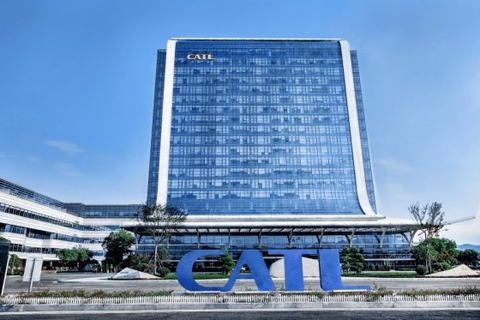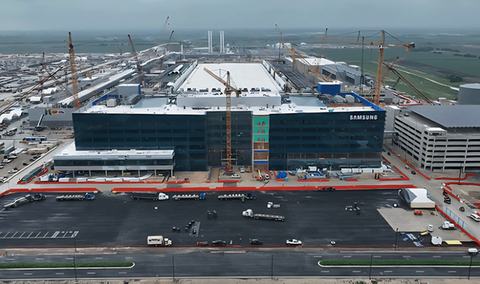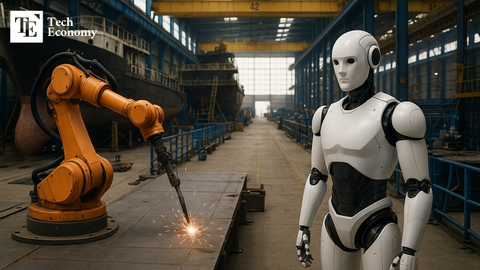Input
Changed
Automation spreading to welding, transport and other processes
Moves to develop dedicated humanoid robots underway
Low-skilled labor increasingly replaced by robotics across industries
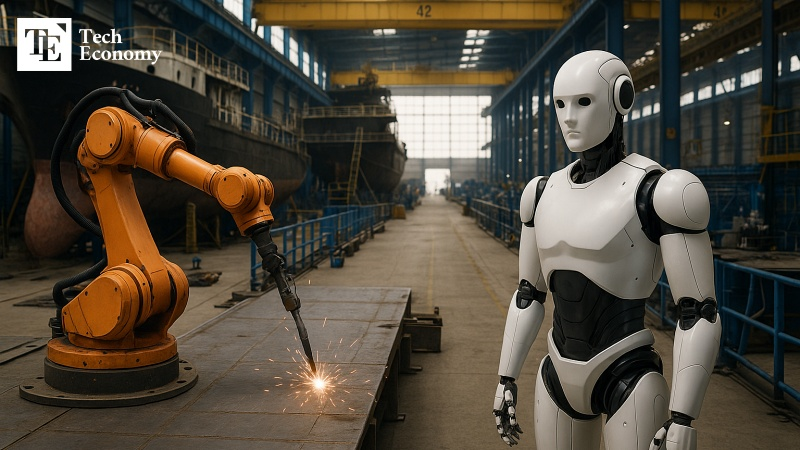
Korea’s shipbuilding sector is moving quickly to adopt smart shipyards as a way to reduce labor-related risks while maximizing production efficiency. Some companies are ramping up the use of robots for high-risk, labor-intensive tasks, while others are simultaneously developing humanoid robots designed specifically for shipyard work. This trend is extending beyond shipbuilding into manufacturing at large, accelerating the replacement of low-skilled, repetitive labor. Analysts say it could trigger structural changes in global production networks, while also presenting new challenges for labor markets and regional economies.
Tackling Labor Shortages While Raising Quality
In recent months, Korean shipbuilders have stepped up their transition to smart shipyards to improve workplace safety and reduce risks from labor disputes. Major yards are replacing high-risk processes such as welding and painting with automated equipment, while some are introducing remote-controlled machinery and automated material transport systems to minimize the potential for workplace accidents. This strategy aims to lower dependence on human labor while maintaining high productivity, and it is increasingly defining industry-wide transformation.
A leading example is HD Hyundai Group. Its subsidiary HD Hyundai Samho, which operates a shipyard near Mokpo, is running at a record utilization rate, with orders booked solid for the next three years. Robots now handle the majority of tasks at the yard, easing chronic labor shortages. In welding alone, the company began deploying robots in 2022, and now 85 robots perform roughly 70% of welding operations.
HD Hyundai Samho has outlined a vision to reclaim its position at the forefront of the global shipbuilding market through its smart shipyard strategy. This includes applying digital design technology based on 3D modeling from the earliest design stages, and building a remote monitoring system to manage data across all processes. Automated welding robots and unmanned material transport vehicles are intended to offset shortages of skilled labor, while improving consistency in work quality. Such automation and digitalization measures are spreading quickly among major shipyards.
The move is also a way to minimize the risk of labor disputes. Korea’s Serious Accidents Punishment Act, enacted in 2021, increased criminal liability for business executives when major workplace accidents occur, holding management personally accountable for inadequate safety measures. The Yellow Envelope Bill, now awaiting a full National Assembly vote, would limit companies’ ability to claim damages from losses caused by strikes, reducing employers’ legal leverage in labor conflicts. While both laws are aimed at enhancing worker protection and rights, they have also raised labor and safety compliance costs for companies.
Smart shipyards are seen as a practical solution that reduces these risks while maximizing efficiency. Automation cuts the need for human labor in dangerous tasks, lowering the probability of major accidents, while digital management systems enhance process efficiency to prevent delivery delays. Integrating design, procurement, and production data reduces material waste and bottlenecks, further cutting costs. What began as a response to legal and regulatory changes has evolved into a core competitive edge in winning global contracts, where quality and on-time delivery are critical.
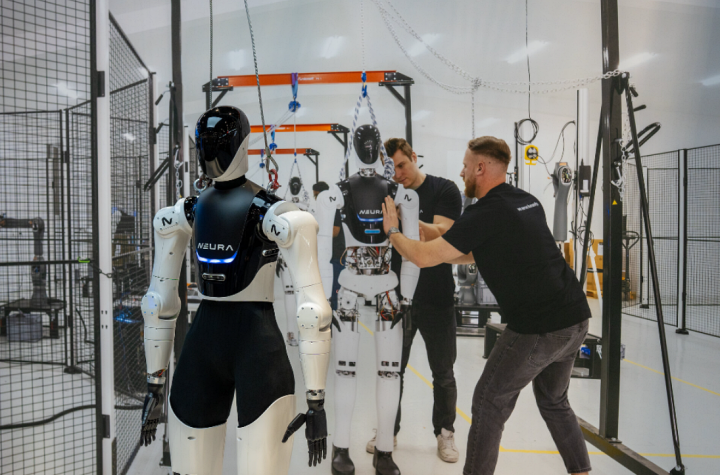
Shipyard-Specific Humanoids Nearing Reality
As Korean shipbuilders expand robot use to replace human labor, efforts to develop humanoid robots tailored for shipyards are also gaining momentum. In July, HD Hyundai Samho and HD Hyundai Robotics partnered with Germany’s Neura Robotics to begin field testing humanoid and quadruped robots for shipbuilding. Neura is supplying core technologies, including its cognitive robotics platform “4NE-1”; HD Hyundai Samho is providing test facilities; and HD Hyundai Robotics is contributing welding automation data and path-learning expertise for performance verification. The initiative is significant as a joint attempt to address two industry-wide challenges: a shortage of skilled labor and the prevalence of high-risk processes.
Development of autonomous mobile robots is also in full swing. Collaborative robot specialist JCT has launched a project, under Korea’s government-backed Shipbuilding and Offshore Industry Technology Development Program, to create “autonomous mobile units with a payload capacity of over 30 kilograms and integrated welding robot systems” for shipyard operations. These robots can navigate work areas independently and carry out welding and other tasks without external assistance, offering solutions tailored to the confined and irregular spaces unique to shipyards — developed entirely with domestic technology.
The current trials focus on leveraging human-like range of motion and perception to tackle processes beyond the reach of existing automation. The goal is to perform repetitive, precision tasks under the harsh conditions of shipyards — high heat, humidity, and dust — while enabling autonomous movement and collaboration across work zones. Industry officials believe that if these targets are met, it will be possible to expand the scope of applicable processes and consider large-scale deployment in the field.
Significant challenges remain before commercialization. Field tests must demonstrate the repeatability and safety needed to become standard operating procedures, and cognitive and path-learning functions must be stabilized for the highly variable environments of shipyards. For solutions proven in large shipyards to spread to medium and small yards, modularity in both application scope and equipment configuration will be necessary. Ultimately, the current phase is about gathering hard data on what roles robots can perform — and where their limits lie — in actual shipbuilding. These findings will heavily influence both future investment decisions and the speed of adoption.
Impact on the Global Production Network
The shift to automation is an unstoppable trend across industries. In high-volume sectors such as electronics and automobiles, robots are increasingly replacing humans in repetitive tasks like welding, painting, assembly, and inspection. On many major Korean manufacturing lines, robots operate around the clock, delivering consistent quality and speed, while human workers are being reassigned to higher-value roles in design, management, and quality assurance.
Experts view these changes as the opening salvo in a reorganization of the global production network. As production hubs move away from low-wage labor toward technological and automation competitiveness, global supply chains will realign accordingly. The smart factory model — combining AI-powered quality control, autonomous logistics robots, and remote monitoring systems — is expected to become standardized across borders, directly shaping multinational production strategies.
The challenge, however, is the likelihood of structural shocks to labor markets and regional economies. In this trajectory, demand will grow for new technical roles in robot operation and maintenance, data analysis, and systems management, while jobs for low-skilled, repetitive labor will inevitably decline. Without adequate retraining programs and employment safety nets, long-term unemployment and income inequality could worsen among certain groups. This is why both governments and industries must weigh not only the efficiency gains from technological innovation but also the social and economic repercussions of a transformed employment landscape.




